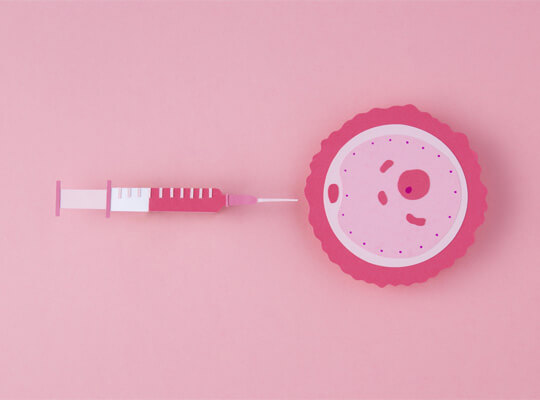Gynecomastia
Table of Contents
What is gynecomastia?
Gynecomastia (also known as “male breasts”) is a common condition in which men’s breasts become larger than normal. Adolescent and old men are the most affected group.
Why is gynecomastia caused?
The reason is that there is a decrease in the level of testosterone hormone compared to Estrogen. Conditions that limit the effects of testosterone, lower testosterone, or raise estrogen levels can cause testosterone levels to drop.
What conditions cause gynecomastia?
Conditions that reduce testosterone production, such as Klinefelter syndrome or pituitary insufficiency, may be associated with gynecomastia. Hormonal changes that occur with aging are one of the main causes of gynecomastia, especially in overweight men.
What medications or drugs cause gynecomastia?
Spironolactone, cimetidine, ketoconazole, hGH, estrogens, hCG, anti-androgens, GnRH analogs, and 5-reductase inhibitors are all medicines that have been linked to the development of gynecomastia.
Symptoms

Does gynecomastia mean low tetosterone?
A reduction in the level of the hormone testosterone in comparison to estrogen causes gynecomastia. Conditions that limit the effects of testosterone, lower testosterone, or elevate estrogen levels can cause a decline. Aging (a gradual decrease in testosterone level from the age of 30) Trauma to the testicles, infections affecting the testicles. Undescended testis. Exposure to radiation and/or chemotherapy as part of cancer treatment lowers testosterone levels.
Does gynecomastia go way?
Gynecomastia usually goes away without medical treatment. Breasts flatten over a period of several months to several years. If the gynecomastia is very severe, there are medications that can help And if the gynecomastia persists after puberty, we can reduce the size of the breasts with a little surgery.
Who might have gynecomastia?
70% of men in early and middle adolescence are affected, they experience gynecomastia due to normal hormonal changes that occur during puberty. Gynecomastia is also common in middle-aged and older men. In this population, 65% of men are affected.
Gynecomastia durig proberty
Boys’ hormone levels fluctuate during puberty. Estrogen can cause breast tissue to develop if testosterone levels drop. Many young men develop some degree of breast growth and stop. As men age and hormone levels become more stable, gynecomastia goes away.
Gynecomastia in infats
It is usually seen in newborn babies as a result of maternal hormones acting on the baby’s breast tissue, but it normally goes away within a few weeks. Adolescence is the next period when it is commonly noticed.
Gynecomastia in adults
The cause of gynecomastia in men in these periods is only an increase in the amount of mammary gland tissue caused by an imbalance of estrogen and testosterone hormones.
How do i know if its gynecomastia
A button-sized growth under the nipple is a sign of gynecomastia. This may look like a lump in the chest or be felt when you press on the area. The lump in the breast tissue can move freely and be tender to the touch. This can happen in one or both.
Is gynecomastia normal at 18?
Gynecomastia is quite common in young people and 69% of men between the ages of 10 and 19 are affected. This is related to hormonal fluctuations; Many men produce too much estrogen during puberty, which leads to breast development.
Should i worry about gynecomastia?
The only thing you need to worry about is that it may slightly increase your risk of breast cancer.Even if you have gynecomastia, your chances of developing male breast cancer are slim.Gynecomastia usually goes away on its own with very little therapy and low danger of long-term problems.
How is gynecomastia diagnosed?
Gynecomastia is clinically diagnosed when there is subareolar breast tissue that is 2 cm or larger.Malignancy is suspected if a hard, immobile tumor is seen on physical examination.Cupping of the skin, nipple retraction or discharge, and axillary lymphadenopathy suggest cancer as a possibility.
How is gynecomastia managed or treated?
Androgens (testosterone, dihydrotestosterone, danazol), anti-estrogens (clomiphene citrate, tamoxifen) and aromatase inhibitors (letrozole, anastrozole) are three types of medical treatments for gynecomastia.
Can gynecomastia be prevented?
Most cases of gynecomastia are unavoidable. Natural fluctuations in hormone levels are responsible for this. Adults, you can reduce your chances of developing gynecomastia by avoiding certain medications, substances, and lifestyle factors.
When should i call my healthcare provider about synecomastia?
Gynecomastia usually goes away on its own within 6 months, especially during adolescence.Your breast will return to normal without any treatment.As a result, you may prefer to wait for this period to pass before talking to your doctor.However, if you see any gynecomastia symptom and it does not go away within the specified time, you should contact your doctor immediately.This is typical and your doctor may not treat it.Doctors in most cases prefer to monitor gynecomastia rather than treat it, especially since it usually resolves on its own.Instead of treating it, you should wait for your doctor to find out what’s causing the problem and then stop (unless it’s a life-threatening condition).(unless it’s a life-threatening problem).It is very important that you inform your doctor about your gynecomastia.Even if it is not a threat in itself, men with gynecomastia have an increased risk of developing male breast cancer.

What questions should i ask to my doctor?
For More Information
Please do not hesitate to contact us for more information on the subject.



